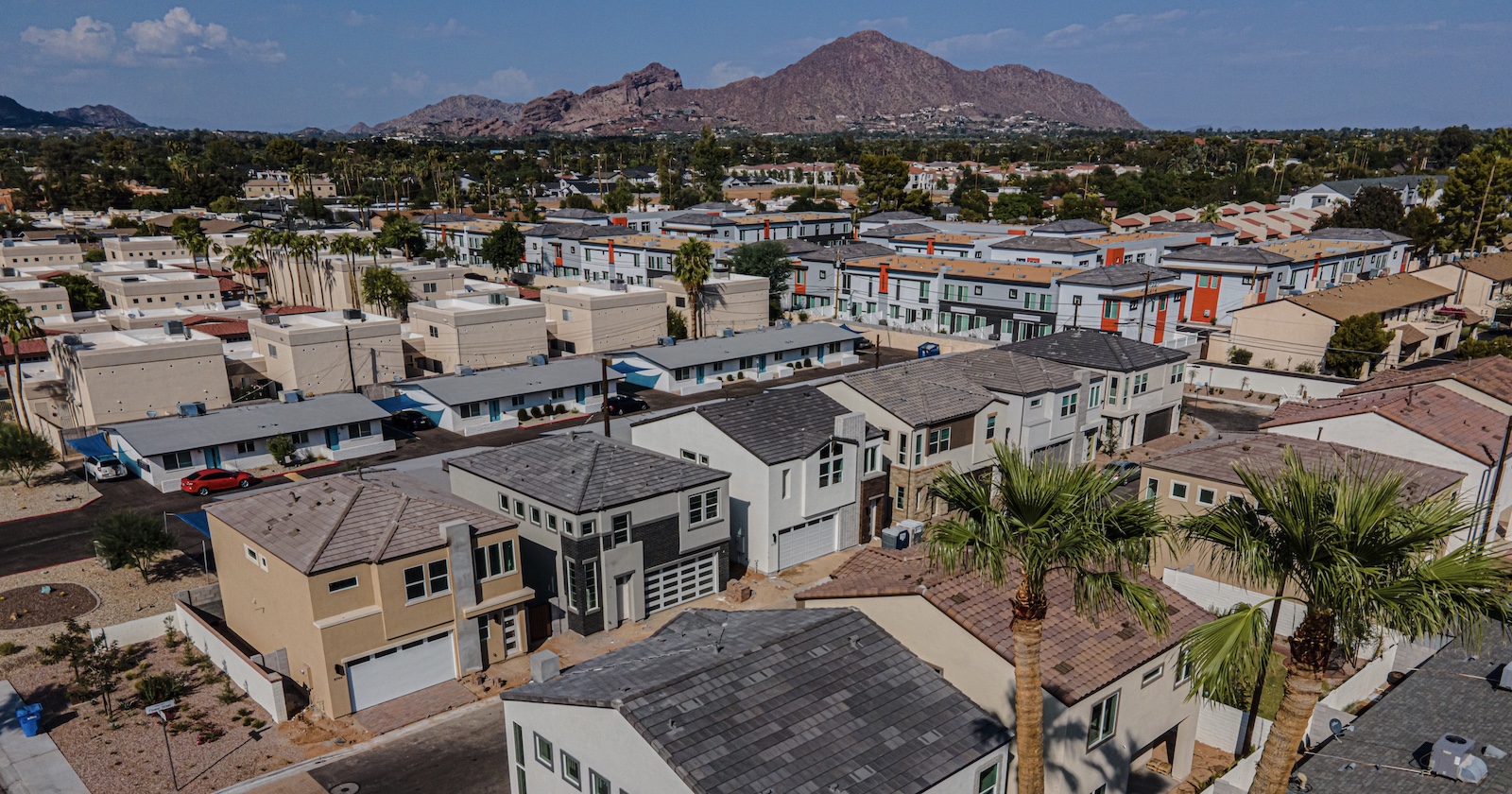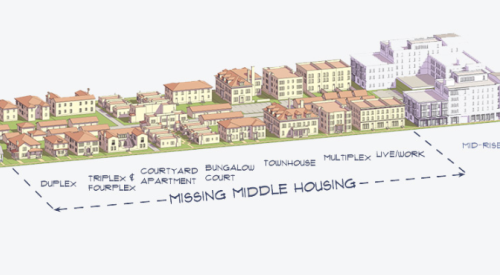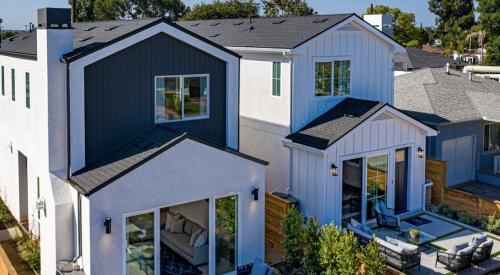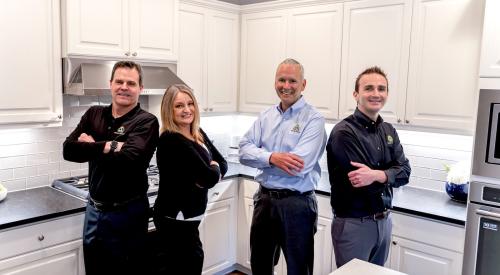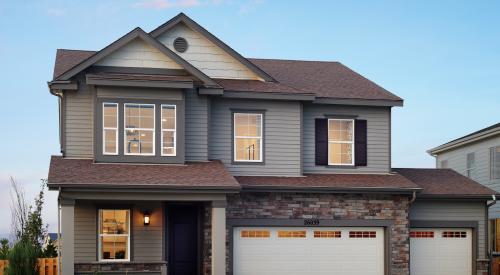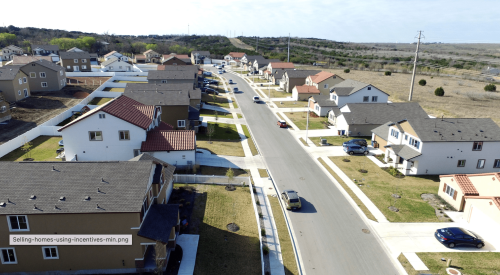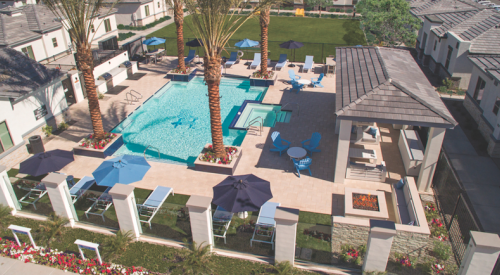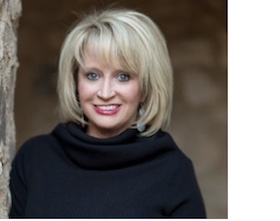
Managing director
Camelot Homes
One of Camelot Homes’ strategic challenges has been to find opportunities to diversify its business. For 50 years, the third-generation family-owned and -operated builder in Scottsdale, Ariz., has occupied a high-end luxury market niche by appealing to buyers who don’t want the hassle of a custom build yet want to personalize their home beyond what production builders in the area typically offer or allow. Camelot Homes has successfully attracted and catered to this buyer segment, as reflected in the builder’s high customer-satisfaction rankings from surveys by Eliant Experience Management.
But even the high-end market can soften. To hedge, Camelot started building detached homes on infill lots as small as an acre to rent under a new brand, Arcadia Communities. The first 12 rental homes, featuring a backyard and a garage, were built in 2020 in Phoenix and were rented within 30 days after completion. Managing director Julie Hancock talks more about Camelot’s growth plans for build to rent and other ways the company, a 2021 National Housing Quality Bronze Award winner, is diversifying its revenue stream.
PRO BUILDER: Before we discuss Camelot Homes’ entry into the build-to-rent market, tell us a bit about the company.
Julie Hancock: We build anywhere from 50 to 150 predominantly luxury single-family homes a year on pieces of land anywhere from 1 to 15 acres, depending on the market cycle, with an average price of about $1.5 million.
PB: What led to the decision to diversify?
JH: We realized that, as generous and good as that market has been for us, we really need to diversify in order to cycle protect, so if the high-end softens, we have something to balance that out. That’s what led us to start a custom home remodeling division and to build single-family rentals.
PB: To diversify, you could have gone to different price points in home building. What led you to consider rentals?
JH: Camelot is predominantly known for high-end luxury, and we didn’t want to dilute our brand by going to different price points. To go into single-family rental, we created a partnership that isn’t under the Camelot name, per se. Camelot builds the rental homes, but it’s under the partnership name, Arcadia Communities. We felt that protected the Camelot brand while also bringing us into an entirely different niche. You know, rental markets are sometimes counter-cyclical to the residential sales market, so we thought that would protect us.
PB: Tell us a bit about the Arcadia Communities product. Is it infill? What kind of housing are we talking about?
JH: We looked at the single-family rental market and saw there were a lot of big players already in this space and that more were coming. It was increasingly difficult to find land that wasn’t being bid on by multiple big, national builders. So we said, is there a space for someone smaller? And we saw that we could do infill deals ... small pieces of land anywhere from 1 to 15 acres.
These [parcels] were in existing residential communities and we decided we’d create a business model that has an exit strategy. The exit strategy could be to sell the units to one of the larger developers that’s in this space already, or to just sell them as single-family homes.
All of our single-family rental communities exist as single-family detached homes with garages—that was something we weren’t really seeing in the SFR market in Phoenix. Most of the existing rentals were horizontal apartments. So we decided to build single-family homes in infill spaces.
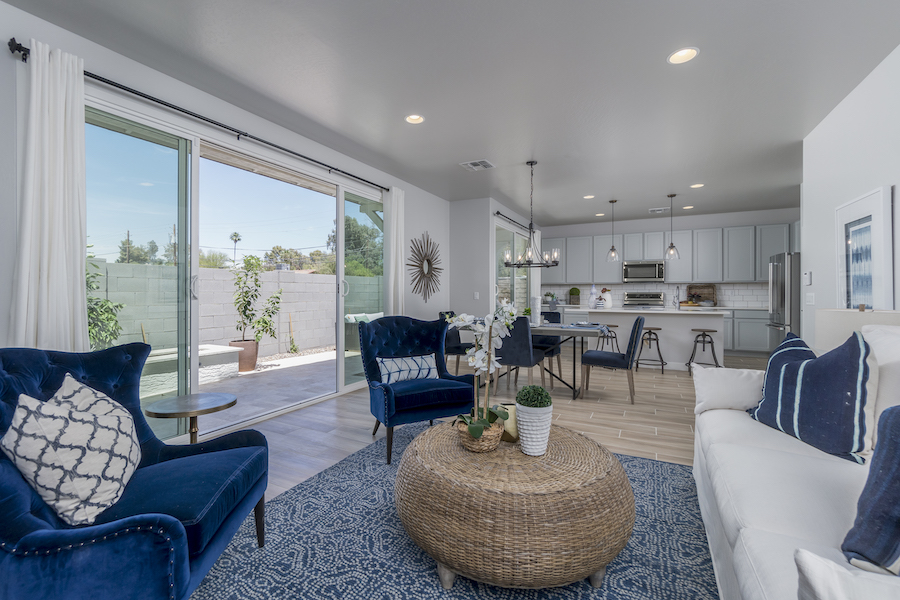
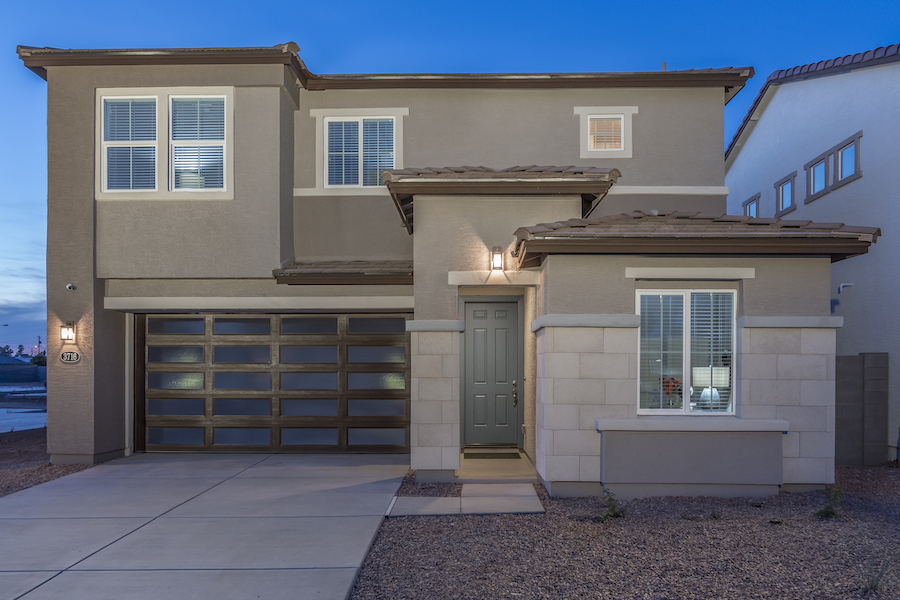
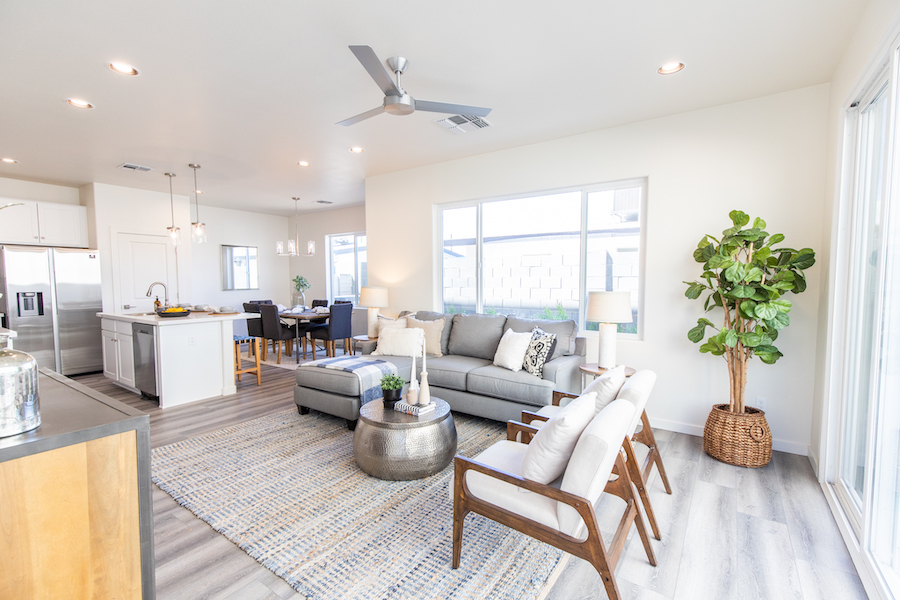
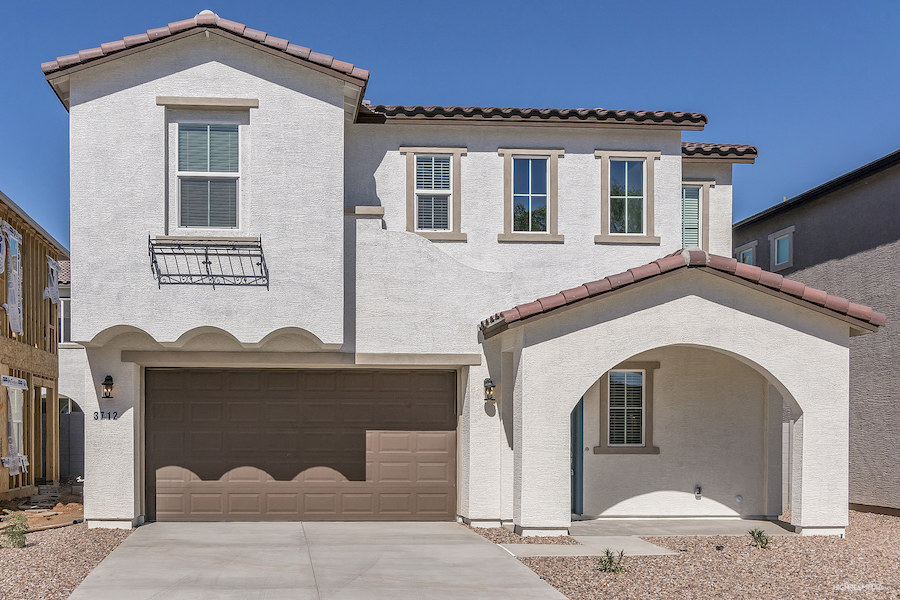
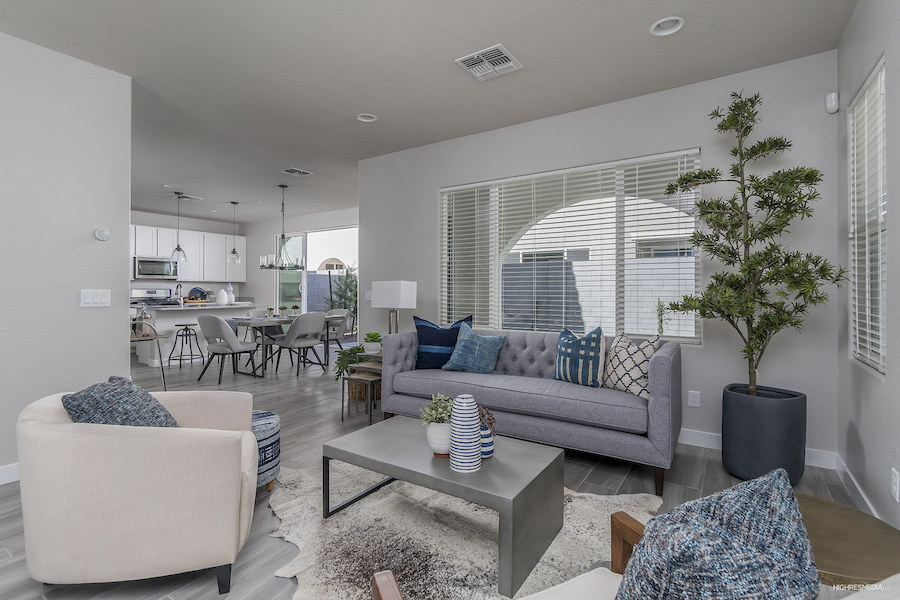
PB: What is the style and product type of your rental homes?
JH: We have two series: the Cottage Series and the Estate Series. Woodley [Architectural Group] designed the houses, and they’re charming. Both series feature two-story homes with three to four bedrooms. They range from 1,600 to 2,100 square feet and have two-car garages. And, depending on the lot size, they either have a very minimal 5-foot-[deep] backyard or a generous 25-foot-[deep] backyard. So they’re predominantly smaller lots, ranging from ... I think our smallest lot is 40 by 52 feet and our largest lot is 50 by 100.
PB: Tell us about Arcadia’s renters. Who are they and where do they come from?
JH: We’ve been really pleased because the units hit the right market. We were seeking—and we recognized that there were—these 30-year-olds who’ve decided to marry later in life, they don’t have kids, they have a dog. They’re starting to settle their family. They’re dual income, but may not have enough money for a down payment, and they’re tired of apartment living. What they want is a yard for their dog and a home they could perhaps grow a family in while saving money as they’re renting to be able to ultimately purchase.
We plan to hold the units as rentals for the next five to seven years, during which time, we hope these renters will accumulate capital and will want to purchase, and they’ll end up being the buyers for this product. That’s essentially our cycle strategy; that every five years we’ll start selling the units, and they’ll have achieved the appreciation that the units may have received as a residential unit, and we’ll roll new product in as we go.
PB: So, essentially, you’ve developed a pool of prospective buyers. Are they trying out the community or are they trying out the Camelot brand in terms of the lifestyle and the quality Camelot delivers?
JH: You know, I think they’re trying out single-family–home living. I think most of them are coming out of apartments and they’re wondering about what it’s like to live in a house and whether they’ll like it. These rentals are high density. We are about six to eight units to the acre, which is higher density than our Camelot product by a long ways. But the homes are still detached. They have a yard. They have a place to barbecue. They have a place to have friends over.
So I think they’re trying out the lifestyle, and with that, Camelot builds quality and the homes are beautiful. Even though the rental units don’t have the Camelot name on them from an advertising perspective—they’re under Arcadia Communities—I’m proud to say we built them.
PB: So, not only are you building the rentals, but you’re doing the asset management, collecting rent, and doing the maintenance?
JH: Not completely. We have a management company that collects rent, finds us tenants, and handles the turnover. And we review the rental applications as an organization. We do do the asset management ... the maintenance on the homes—any kind of maintenance. We built them, and we maintain them.
RELATED
- Are You Ready for Build to Rent?
- Could Built-for-Rent Housing Become the New American Dream?
- More built-for-rent information
PB: How many units do you have now?
JH: Right now, active, under construction, and open, we have 97 units, and we have another 334 lots tied up that we’re rolling into. We think there’s ample opportunity in the infill spaces in the market, so we’re currently working on establishing a relationship with an equity partner so we can grow to probably $100 million.
PB: And basically the business model is to hold onto those units for a few years?
JH: Yes, anywhere from three to seven years, depending on the community. Some of these communities have built in equity the day we open up, so we could turn around and sell them as single-family homes and make a profit. But we want to hold them for a period of time to allow us to build up the pipeline, so we can continually bring in new product and then sell off some of the older product as it ages. Typically, we’re thinking our overall time will be three to seven years.
PB: What’s the average or median monthly rent for a unit?
JH: About $2,600 a month.
PB: And is this outreach accomplishing your goal of diversifying revenue streams?
JH: Absolutely. What’s great for us as Camelot, is that we have these wonderful partners who’ve been in the industry, and we also have a steady flow of upcoming projects for our construction team to flow into from our high-end luxury product. So, if I have a high-end product that’s winding down and my site managers are there, they can run over and fill in on one of these other sites. And so we’re able to maintain a more steady flow of staffing for the trade base. There’s also that financial flow of income from the units that we’re developing.
PB: You’ve also diversified with your custom home remodeling division. Tell us about that. And what was some of the decision-making involved in that journey?
JH: We’re family owned, and I have three children who are all part of the business. The question was: How do you grow a family-run business? And we’re a third-generation company, too. These kids are the third generation and they have children now. So when I call them “kids,” they’re not kids, they’re middle-aged adults. In any event, the three of them each have different interests in the business, and we wanted to give them ways they could each develop so they wouldn’t be under our thumb. One of our sons decided he wants to do what’s called G3, for Generation Three, and he’s building a new community in Phoenix called Paradigm, where he is using a completely different architectural style than what Camelot builds.
He’s trying to reach that $700,000 to $1 million price point and has started his first community. That will be open in fall [2021]. (Editor’s note: G3 is introductory luxury brand named for the third generation of the Hancock family and is led by Trent and Chase Hancock. Paradigm is a 12-lot gated community featuring one- and two-story contemporary homes with outdoor living and car-lift garages).
Our daughter [Cammie Hancock Beckert], however, had a completely different attitude. She was in YPO [Young Presidents’ Organization] and wanted to run the business. We weren’t ready to let go. So she decided she’s going to take over the custom home and remodeling divisions.
We find we have a huge database of existing Camelot homebuyers—we’ve built thousands of homes in the Valley—who want to stay where they are because there aren’t neighborhoods like what we used to build anymore. These homeowners want to remodel, and who do they want to go to but the builder that built their home and knows it best. So we’re working that database of existing Camelot buyers.
And then there were a lot of people who came into our Camelot luxury communities and said, “I love your house, but I have a custom lot in this community,” or “I don’t want to be in a production community. I want to build this on my own. Could you find us a lot?” So we thought, why are we missing out on this opportunity? Here’s another niche. Those custom buyers now are coming in. My daughter handles that. She has her own team, her own architectural staff, her own site managers, and she manages those customers from beginning to end, either remodeling or designing their custom homes. That’s been a great way to diversify the business as well.
